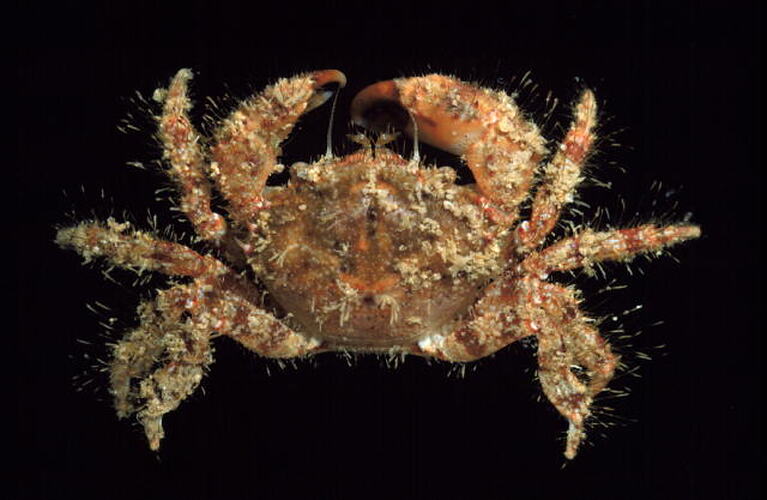General Description
Carapace anterolateral margin with 3 long sharp conical spines; carapace with numerous scattered stiff hairs, about 12 hairs forming a fringe behind frontal margin. Cheliped with spines on outer face; walking legs with sharp spines on meri, carpi, but not propodi. Up to 22 mm wide.
Biology
Whereas many crabs will attempt to escape when disturbed or captured, pilumnud crabs play dead, curling their legs up to look as inconspicuous as possible. Their camouflage makes them difficult to see even when rocks are turned. Pilumnids are among the most difficult of crabs to identify to species in southern Australia, and close attention to the structure of the first pleopod (gonopod 1) of male specimens will be required to separate some closely related species.
Distribution
Southern temperate oceans, including southern Australia.
Habitat
Subtidal, to 220 m depth.
More Information
-
Animal Type
-
Animal SubType
-
Brief Id
Carapace scattered with stiff hairs, with 3 long conical spines on anterolateral margin, claws with spines on outer face.
-
Maximum Size
22 mm
-
Habitats
-
Diet
Organic matter
-
Hazards
Not harmful but a nip from large claws could be painful
-
Endemicity
-
Commercial
No
-
Conservation Statuses
DSE Advisory List: Not listed, EPBC Act 1999: Not listed, IUCN Red List: Not listed
-
Depths
Shallow (1-30 m), Deep ( > 30 m)
-
Water Column Locations
On or near seafloor
-
Taxon Name
-
Scientific Author
Rathbun, 1923
-
Common Name
Long-spined Hairy Crab
-
Phylum
-
Subphylum
-
Superclass
-
Class
-
Subclass
-
Superorder
-
Order
-
Suborder
-
Infraorder
-
Family
-
Subfamily
-
Genus
-
Species Name
acer

